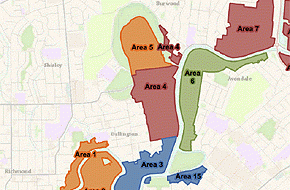
A new co-ordinated approach between private insurers, the Earthquake Commission and the Canterbury Earthquake Recovery Authority will ensure Crown-owned properties in the residential red zoned flat land are cleared by the end of next year.
In announcing details of the new approach today, CERA chief executive Roger Sutton commended the willingness of the various insurers to work together.
“Almost 40% of the Crown owned properties have already been cleared in the flat land, but this has been happening in a sporadic way as each individual property owner settled with the Crown and/or their insurer,” he said.
“Through this new approach we have sequenced a geographic approach working together by either demolishing or relocating the houses, clearing the land, fencing it and then grassing it straight away.”
“Not all houses in the Residential Red Zone flat land will be demolished. Around 300 houses have already been relocated to other green zone properties, mostly throughout greater Christchurch.”
A map of the clearance areas as attached to this story.
The new approach sees the flat land red zone sectioned into 15 geographical areas and prioritised based on the least number of properties left to clear and where the work can be quickly completed.
By the end of next year all Crown-owned properties in each area will be cleared, starting in New Brighton today. The two remaining houses in this area will be demolished over the coming days, and the area will be sporting grass by Christmas.
Sutton says this approach will ensure the area is tidy and safe for residents who remain living in and around the red zone areas.
“It makes sense for us to work with CERA so there is a co-ordinated approach that will see specific areas prioritised for clearance to reduce the incidence of arson, vandalism and other behaviour that is causing a concern for people,” Insurance Council chief executive Tim Grafton said.
Up until now sites have been cleared as settlements have been reached. Insurers have claimed good progress having cleared 2,833 sites of 4,869 in the red zone flat area of the city where residents chose to pursue insurance claims with insurers. This is about 60% of the properties insurers had responsibility for demolishing.
3 Comments
This is ridiculous. Still no plan is in place to utilise the perhaps 2000 homes that could be relocated. Instead mass demolition without much reuse of materials (crunching and splitting out metal, concrete and wood isn't really recycling).
For just $20k a one piece shift timber floor house can be put on a new foundation. Perhaps $50k all up to be back up and running. Surely that is a solution to affordability issues. Why is this real solution just being ignored?
Chris_J.......you ask too much of the bureaucracy to make common sense decisions.........
Affordable housing is not on the greater agenda............never has been.
We all know what the decisions should be...........and there is no way those decisions are ever going to made.........you only have to look at all the covenants placed on the subdivisions around Christchurch.........there is not one new subdivision that I'm aware of that allows relocated houses........
Typical bureaucratic speed -this is actually moving quite fast - a mere three years after the first of the five-big-quakes sequence, and only 23 months after the last of those (Dec 2011).
And yes, relocating many of these homes was always a goer, becuase there was comparatively little structural damage in many until they drove a 15-tonne digger over them.
I'm especially sad about the amount of good native timber that's been recycled to landfill - we will simply never see its like again.
But, as with Detroit, managing decline (a future graduate course, methinks) doesn't come easily to the cheer-leader archetypes that are driving all this (even if at Cat D7, low gear speeds).
And, an Interesting economic sidebar to all the 'rebuild' work going on.
Having run fleet management systems in one of my careers, the focus was always on utilisation and efficiciency. Unless wheels were turning and hour-meters ticking over, there was no point in owning and running the plant - better to hire it.
Everywhere around Christchurch, ya sees hugely underutilised plant. Most gear these days runs about $250,000 per 10 tonnes of weight as a rough guide, so seeing an 80-tonne crane - capex prob around $2-4 million), sit on a site for literally months and clock up (guess) 8-10 engine hours per week,certainly offends my fleet-management soul - what's left of it.
Multiply that by perhaps thousands of pieces of heavy plant (I'm not talking aboot tricks and little diggers here), and I suspect there's a Case Study in there. Because the economic effects of this capacity underuitilisation must emerge somewhere.....


We welcome your comments below. If you are not already registered, please register to comment.
Remember we welcome robust, respectful and insightful debate. We don't welcome abusive or defamatory comments and will de-register those repeatedly making such comments. Our current comment policy is here.